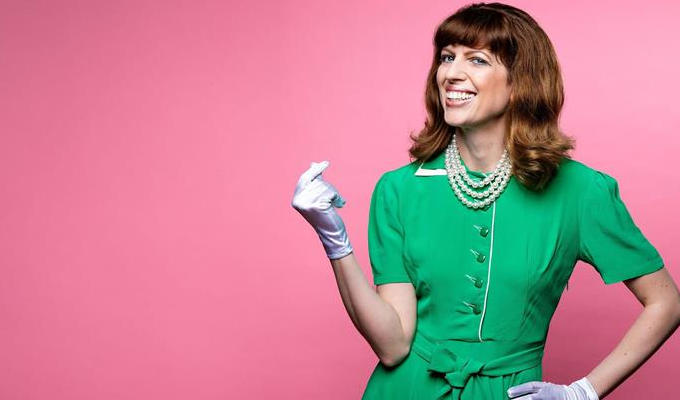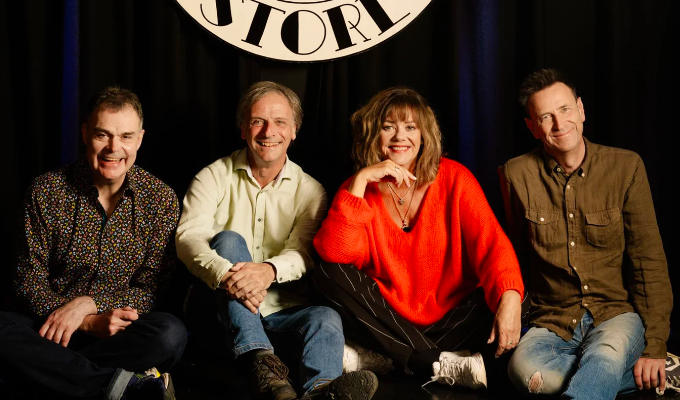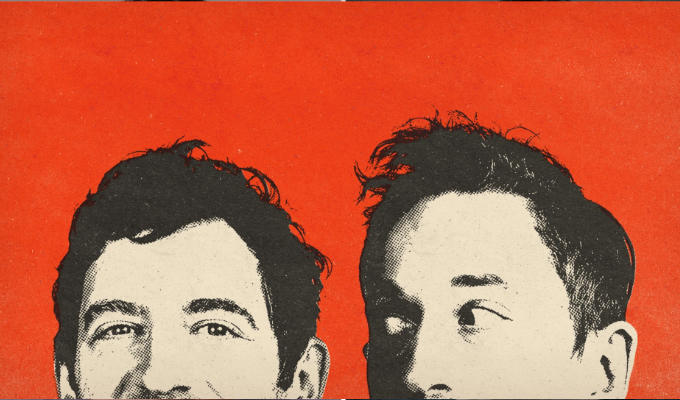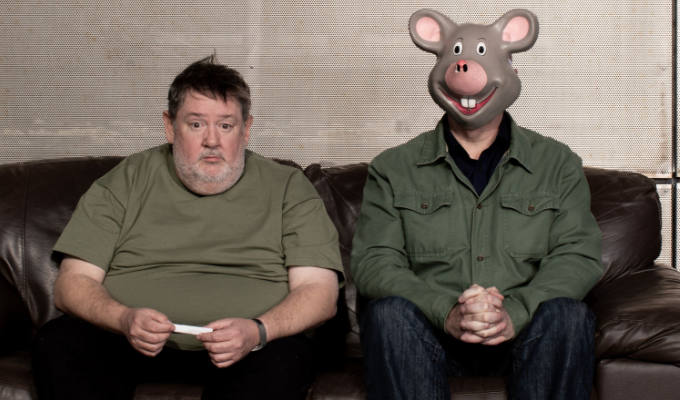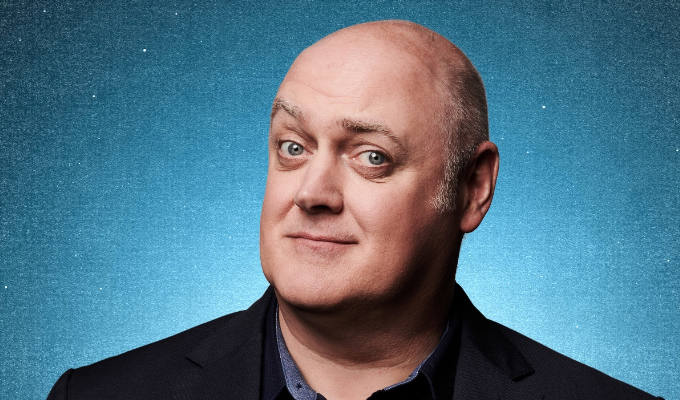Why we'll never know the real Les Dawson
When Ray Peacock tried to create the definitive biography, he was thwarted by the stubbornness of a family at war
I spent five years of my life researching and writing about Les Dawson, yet I can confidently say that not one word of it shall ever be deemed suitable for publishing. Even as I sit here, nearly four years after last putting pen to paper on the subject, the extensive A4 folders and notebooks adorning the shelves in my office continue to goad me in their pointlessness. The recent controversy surrounding the proposed statue of Les in Lytham brought back the ghosts and illustrated almost perfectly the reasons why…I first approached Les’s agent Anne Chudleigh with my proposal to write a film based on Les’s first autobiography A Clown Too Many in 1998, my naivety of the forthcoming difficulties comfortably intact and my belief in the project determined and unwavering.
Anne had quite the reputation as being a very formidable, some may say draconian agent, still boasting a major client in Michael Barrymore whose star was burning brightly in the showbusiness sky. Despite her slight stature and mature years, her icy stare and poker face ensured my initial meeting with her remains the most nerve-racking of my professional career. Her obvious suspicion of my motives would years later fall into place, and it was only the production of a sincerely passionate, written proposal during the meeting that swung me into favour.
After slowly and silently reading the 500 word document she fixed me in her steely gaze and declared that, despite my inexperience, she believed me to be the right man for the job. In addition, she put it to me that there had never been a definite biography of Les and probed my interest in tackling both projects, a book and a film.
It was a dream outcome, and I left the office on Hanover Street glowing – dwelling on the prospect of an imminent mooted meeting with legendary producer John Fisher at Pearson TV with regards to the film and ignoring the nagging feelings of uncertainty at the instruction given to me to not yet contact Les’s widow Tracy. With hindsight, even at this embryonic phase, not only had I entered a world of in-fighting and tit-for-tat stubbornness - I had already unknowingly ‘taken sides’.
Promising correspondence flew thick and fast between myself and Anne, and the meeting with John Fisher was confirmed, his interest in commissioning the film upfront. Fisher had recently produced the brilliant Heroes Of Comedy series for Channel 4, and I found a kindred soul in commitment to producing fitting tributes to comedians of yesteryear. He remains the only player in this tale that I cannot suspect ulterior motives in, and proved to be an important secret ally in untangling inconsistencies as time went by.
The conversations with Anne began to throw up more and more unease in my mind about the potential difficulties in completing my tasks. The ‘Estate’ was being mentioned more and more, as were ‘The Children’ (being Pamela, Julie and Stuart, the children from Les’s first marriage). I was assured I had the backing of both with the projects, but was still ushered away from contacting Tracy with the proclamation that the time wasn’t right yet. The implication was that if one said yes, the other would say no, and so it was best to keep everybody unaware until the behind-the-scenes work was done. This clandestine operation being utterly contradicted by the instruction from Anne that I contact former professional collaborators of Les for interview.
Meanwhile, my meeting with John Fisher was an absolute joy – we talked about Les at length and he asked me to be involved with a forthcoming compilation programme called Les Dawson’s Finest Hour (in due course the only ‘official’ Les Dawson project my name would ever be attached to). As I left his office, he assured me that he would be in touch with Anne about how to best proceed with the film of A Clown Too Many. Pearson then made an offer to commission a first draft of the script. I remain in the dark as to why this deal was never accepted – it is in front of me right now and I’d have happily signed off on it…
However, as far as I knew, things were moving along promisingly, if slowly, in the right direction, Anne had offered to represent me and the ego-swell of the prospect of having the same agent as one of my heroes was rather large. I started to receive replies from my interview requests, John Cleese leading the pack with an agreement of involvement (Cleese worked extensively with Les in his post-Python, pre-Fawlty years), and in March 2001, full of optimism, I decided to sign up with Anne to represent me.
Also in March 2001, no doubt also full of optimism, Michael Barrymore invited a load of people back to his house for a party.
While unrelated to my project, it seemed to mark the turning point. Correspondence with Anne became increasingly stilted, although occasional letters reassured me that things were moving along. I chatted a couple of times on the phone with John Fisher, he kindly sent me some rare VHS of Les, the amiable conversations only occasionally broken by John’s intimations that there may be concerns with recompense for ‘The Estate’. But who were ‘The Estate’? It was intimated to me that it was neither the children nor Tracy, but that would just leave Anne. Yet Anne would talk about representing ‘The Estate’” as though they were people, saying things like ‘ know the Estate will ask about this…’. To this day I am no wiser as to the true identity of the mysterious Les Dawson ‘Estate’.
Ever the optimist I would tell John Fisher that I felt that damage limitation surrounding the media circus surrounding the tragic fallout from Barrymore’s party would be top of Anne’s list of priorities just now. When Anne and I ultimately parted company, she would go on the record as saying this was categorically not the case. I think I knew this at the time, the behind-the-scenes workings of those in charge of Les Dawson’s legacy would seem to be slightly more complex than it being simply a case of not enough hours in the day.
The fact was, the divide in the people left behind by Les’s death was becoming increasingly more apparent to me, although at that point I still had faith that – just like with Anne in our first meeting – I would surely be able to persuade everybody to co-operate as I was pursuing this for the right reasons. Not for financial gain or personal exposure, but because I genuinely felt that Les Dawson could be further immortalised, his life and achievements definitively recorded for posterity. Surely I could persuade his offspring, widow and professional peers to come together on this? But I was getting an inkling, rightly or wrongly, that financial gain, personal exposure or – worst of all in my mind – petty stubbornness was far more relevant to some of those holding the keys to unlocking the story.
My naivety was showing cracks, and would ultimately crumble when I received a brief letter from Roy Barraclough, Les’s partner in the Cissie and Ada sketches, replying to my interview request.
“Thank you for your letter regarding your forthcoming book on Les. I have given the request a great deal of thought over the Christmas period but having consulted with Les’s family and friends, I have decided not to grant an interview.”
Consulted Les’s family and friends? But I had been assured that I had the backing of the children and Les’s agent, so it would seem to be implied that Barraclough’s allegiance was with ‘Team Tracy’. And as - on Anne’s instruction - I still wasn’t allowed to contact Tracy, that would make that team opposed to the project by default. I was so disappointed yet utterly indignant that it was all so needlessly childish.
This was the point I began to dig properly. I cast the net wider and spoke to people who weren’t in the public eye about Les Dawson, or rather about what he had unknowingly left behind. The story began to take an unpleasant turn, the more people I spoke to, the more variations on the theme there were. Conspiracy theories – some outrageously wild - were in abundance, and a trip to Lytham St Anns left me of the opinion that absolutely everybody had pledged their allegiance somewhere. Everybody had taken a side and never the twain shall meet. The earlier implication that if one said yes the other would say no couldn’t have been more correct, but the realisation came right then that, despite my indignation and self-righteousness about Barraclough’s dismissive letter, I had unwittingly taken a side.
The fact that I was working with Anne (who was the registered owner of the rights to Les’ autobiographies) meant that I had already nailed my colours to the mast as far as the other side was concerned. My proposals were dead in the water at the moment of their conception, it was a truly impossible task to write a definitive official account of Les Dawson’s personal life – it would be one-sided at best, and even then I was sure that certain facts and opinions, in particular the details surrounding the time frame of Les’s involvement with Tracy (many hold the opinion that their relationship began whilst Les’s first wife Meg was terminally ill with cancer), would be hugely debatable without mature clarity from all concerned.
There was no point in continuing and I, at the very least, felt I needed to sever official ties with Anne and ‘The Estate’ (whoever they may be). I tendered the proposal that she release me from my agency contract with her, citing some of my observations and frustrations having been in the eye of the storm. While Anne was understandably not in agreement with most of my opinions, she was in agreement that I seek alternative representation.
My work went on the shelf, and I liberated myself from the project. Nowhere near personal closure on the matter but relieved that I no longer had to deal with it on a daily basis.
Two years later, having paid little attention to the gnawing disappointment I still felt or the occasional irritations provoked by press reports of Les Dawson biopics going into pre-production with various TV companies, I had a chance meeting in Cardiff with Tracy Dawson in a hospitality tent after the Rugby League Challenge Cup Final.
After much procrastination, I decided to introduce myself to her, and was unsurprised when she knew who I was. I was however, surprised to find her most accommodating towards me. I half felt that I would be unceremoniously dismissed or ignored but we chatted quite happily, I explained that I had been under instruction not to contact her when she told me she had found it ‘unusual’, and she gave me her number and said we should get together to see if we could get the biography moving again. Despite myself, I allowed a shard of optimism to take over me.
A few weeks later, I entered Les Dawson’s home with a folder full of research, letters, and selected extracts from the first draft of the book. I sat in his kitchen with Tracy and the wonderful Mo Moreland (from the Roly-Polys). I spoke openly about my experiences, denounced nobody, was diplomatic in the extreme when questioned about Anne and kept my mouth shut when accusations against others were haphazardly thrown about – it seemed more out of habit than of any genuine malice but I may have misjudged.
Occasionally Les and Tracy’s daughter Charlotte wandered in and out, polite, inquisitive and friendly. Tracy explained the difficulty Charlotte sometimes had with the publicity surrounding her late father, but I secretly suspected it went beyond the publicity aspect of it. Charlotte hadn’t reached her first birthday when her father died – I had spent a long time within the warring factions of Les Dawson’s family and management, but couldn’t comprehend the idea of his daughter having known nothing else but the divide. Again however, I am prepared to concede that I may have misjudged.
I left behind the extracts of my work and bade my goodbyes to Mo and Tracy. Tracy said she would read over it and assured me she would be in touch about what she thought may be the best way forward.
While there, I remembered why I had even started the projects in the first place – I was a fan of Les Dawson. I wanted to create something worthy of his memory. The majority of the disharmony seems to have arisen since Les’s death and, hand on heart, it both filled me with frustration and bored me to tears.
That wasn’t what it was ever about – I wanted to tell the story of Les’s life and career, but I came to the unwavering conclusion that many of the people surviving who could tell the story, were far too preoccupied with other things to commit to telling it. Of course, some of them are merely looking to ensure Les’s legacy remains unblemished, but no life story is faultless, in order to write a biography of someone you really do need access all areas, including the elements that those closest to them may consider not fit for public consumption.
Or perhaps there is a fear that if somebody were to write about what has happened since Les’s death, it would maybe not sit well when those concerned saw their actions in black and white. If that were the case they needn’t have worried, the posthumous story is a very different book (or perhaps a medium length article).
As I got to the car I decided that would do as the end of the affair – visiting his home was as fitting an epitaph for my involvement - that would do as my closure. Despite her assurance, I didn’t expect Tracy to get in touch again, and if I learned anything throughout that experience it was to start trusting my instincts rather than false hope.
Tracy didn’t get in touch again.
So that was in 2004. In 2007 it would seem that the war wages on. Tracy has been publicly supporting a proposed statue of Les in Lytham, in my opinion a beautiful and worthy tribute. At the back end of 2007, Julie, Stuart and Pam – the children from Les’s first marriage – appeared to oppose the statue, their statement to the Blackpool Gazette stating:
‘Many people who knew dad will know he was a very kind, considerate, thoughtful and modest man who did a lot for charity but kept many of his actions private. While we support the idea of a lasting tribute to dad, we feel he would have got more joy from more than one project benefiting from the money. That would be the kind of memorial we feel he would have wanted as there would be a direct impact and benefit to people's lives.’
It seems depressingly Pavlovian - opposition merely on account of the fact that the other side supports it. Having researched the man in depth, it would be my considered opinion that Les Dawson would have wept with pride and been humbled beyond belief at the prospect of being immortalised in his beloved adopted Lytham home.
As for getting ‘direct impact and benefit to people’s lives’, I would suggest that Morecambe’s decimated tourist industry would be truly non-existent where it not for the magnificent statue of its most famous son standing proudly on the seafront. Lytham will no doubt receive a similar shot in the arm once Les’s statue is rightfully in place.
Not that I’m taking sides you understand.
Ray Peacock
Published: 15 Jan 2008

